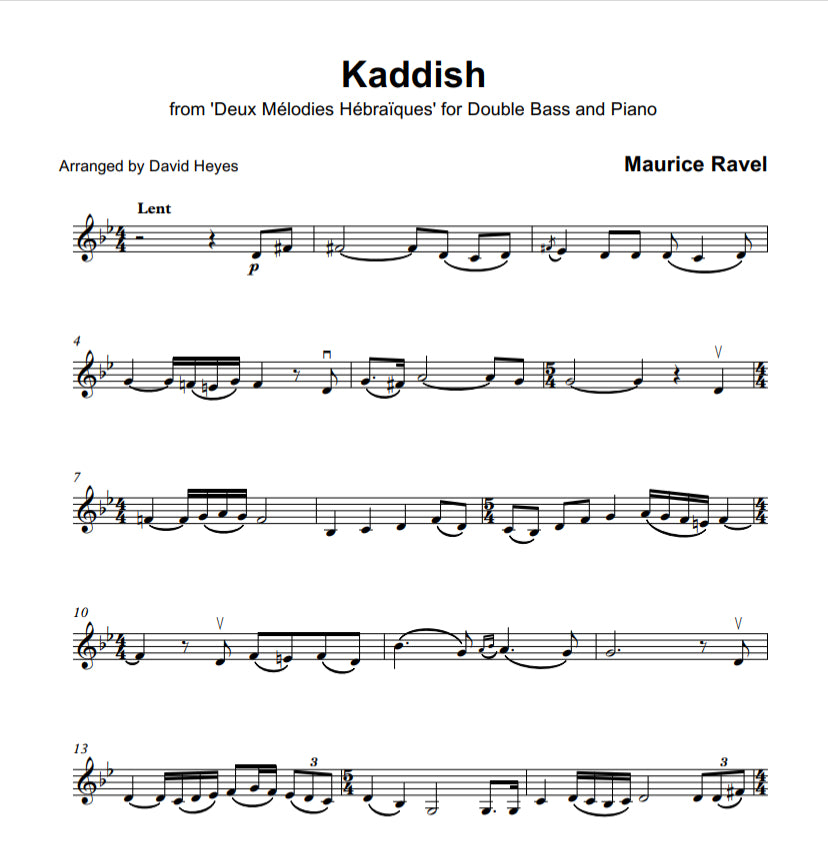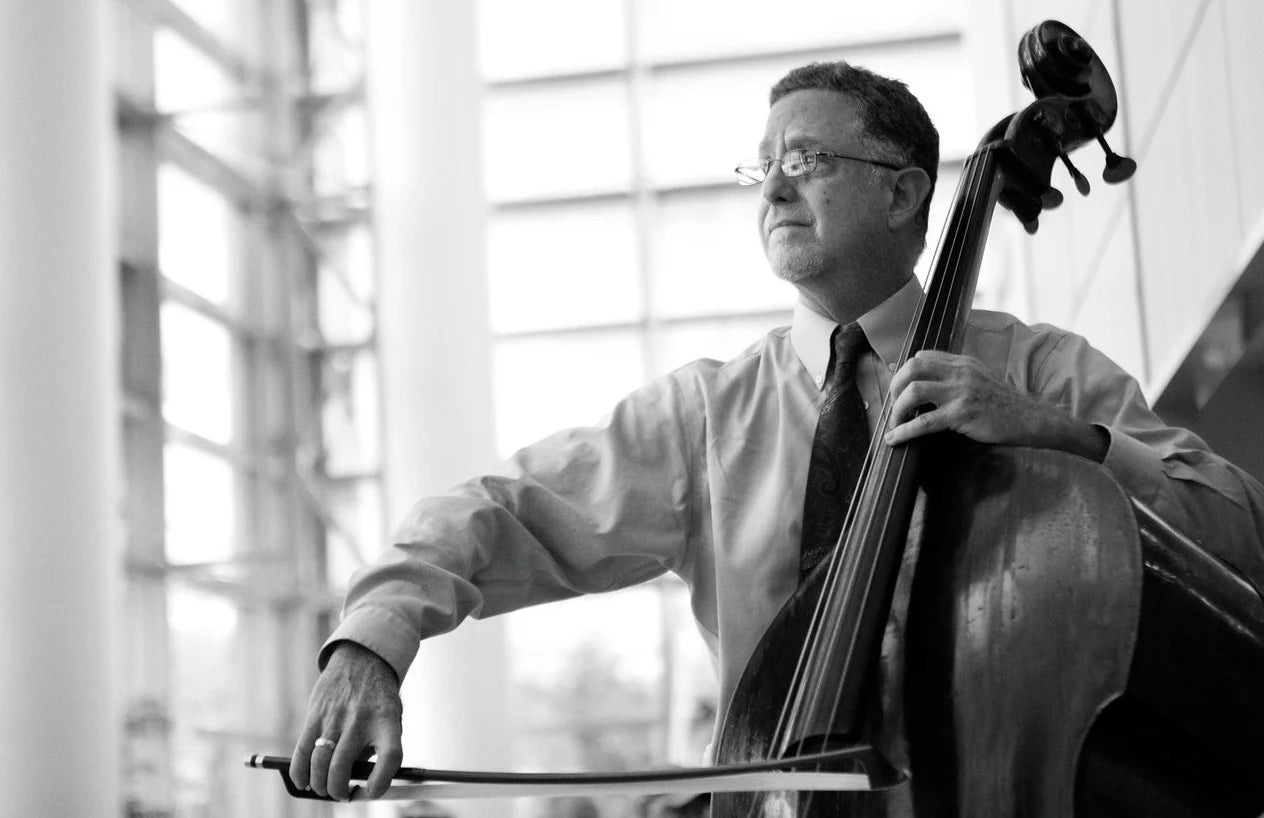David Heyes
Transcription Series Book 2 (arranged by David Heyes) for double bass & piano
Transcription Series Book 2 (arranged by David Heyes) for double bass & piano
Couldn't load pickup availability
About the Book
The Transcription Series Book 2 brings together five fun and accessible works for the intermediate and advanced bassist, arranged by David Heyes. Ideal as either study or recital repertoire, each piece offers a range of musical and technical challenges, primarily in the orchestral register, and emphasizes the lyrical and cantabile potential of the double bass.
Each piece includes piano accompaniments for both solo and orchestral tuning.
Table of Contents
1. Vittorio Monti - Czardas
The term 'one-hit wonder' could be attached to many composers but possibly none more so than Vittorio Monti. His Czardas for violin and piano is surely one of the most popular works in the classical repertoire and has been arranged for almost every known instrumental combination. Czardas has long been a favourite showpiece or encore for double bassists and, in the hands of a great player, sounds as effortless as it does on the violin. It demonstrates so much of the potential of the instrument from the virtuosity and technical brilliance, to the passionate and evocative melodies, alongside evocative and ethereal harmonics. Monti's Czardas is a winner and a magnificent addition to the solo repertoire.
Vittorio Monti (1868-1922) was an Italian violinist, composer, mandolinist, conductor and was born in Naples and studied at the Conservatorio di San Pietro a Majella. At the end of the 19th century, he was appointed conductor of the Lamoureux Orchestra in Paris, where he composed a number of ballets and operettas. Monti’s Czardas was composed during the early years of the 20th century and was first published in Milan by G. Ricordi in 1904 in versions for violin or mandolin and piano, or violin and orchestra. The piece was quickly taken up by every Gipsy ensemble or orchestra, also by classical musicians, until it has become a standard virtuosic showpiece for almost every instrument.
2. Peter Tchaikovsky - Andante Cantabile (arranged by Josef Rambousek)
Andante Cantabile is an arrangement of the slow movement from Tchaikovsky’s String Quartet No.1 in D major, Op.11. Transcribed for double bass by Josef Rambousek, it would be ideal for any progressing bassist with knowledge of thumb position and the ability to demonstrate the lyrical and sonorous qualities of the solo double bass. The opening melody acts as a recurring motif, helping to unify the melodic material, with a simple and supportive piano accompaniment, creating a perfect transcription which is accessible and playable by both performers.
3. Charles Harford Lloyd - Le Départ
Le Départ, originally for cello and piano, was first published in 1920 by Joseph Williams Limited (Great Portland Street, London), a year after the composer’s death. Typical of the salon and characteristic music of the early 20th-century, the piece is lyrical and accessible, transcribing well for the double bass and is ideal for the intermediate bassist. This edition includes solo parts for violoncello (use piano accompaniment marked orchestral tuning) or double bass, playable in solo or orchestral tuning, and is a useful addition to the intermediate transcription repertoire.
Charles Harford Lloyd (1849-1919) was an English composer and organist. He was a fairly prolific composer, primarily of church music, and was organist of Gloucester Cathedral, Christ Church Cathedral in Oxford, and Eton College Chapel. Between 1887 and 1892 Lloyd taught organ and composition at the Royal College of Music in London and after his retirement from Eton was appointed organist of the Chapel Royal at St James’s Palace
4. Maurice Ravel - Kaddish
Deux Mélodies Hébraïques by Maurice Ravel (1875-1937) was written in 1914 at Saint-Jean-de-Luz. The first song Kaddish, here arranged for double bass and piano by David Heyes, uses an Aramaic text from the Jewish prayer book. Both songs were first performed in June 1914 by Alvina Alvi, a soprano with the St Petersburg Opera who commissioned them, with the composer at the piano. Ravel orchestrated the songs from 1919-1920. The piano accompaniment is primarily chordal, contrasting a more rhapsodic and melismatic solo line, utilizing the lyrical and sonorous register of the double bass. Kaddish has been transcribed for many instrumental combinations and demonstrates the vibrant colours and timbres employed in the musical vocabulary of Maurice Ravel.
5. Camille Saint-Saëns - The Swan
This edition includes one piano part and three solo bass parts - one in G major for orchestral tuning and two in F major (high and low) for solo tuning.
Camille Saint-Saëns (1835-1921) composed 'The Carnival of the Animals' in February 1886. Subtitled 'Grande Fantasie Zoologique', it has fourteen movements, is scored for two pianos and chamber ensemble, and is a rare work of musical humour which never fails to thrill its audience, young or old.
The first performance was on 9 March 1886 at the annual Shrove Tuesday concert organised by cellist, Charles Joseph Lebouc, a few days later it was played at the Lentern concert of 'La Trompette', a select Parisian chamber music society, but was then withdrawn for over thirty years. Saint-Saëns' misgivings about the popularity of 'The Carnival of the Animals' overshadowing his many other great achievements was entirely accurate, and it was not released for publication until after his death in 1921.
His will contained the clause: 'I expressly forbid the publication of any unpublished work, except The Swan, which may be issued by my usual publishers, M.M. Durand et Cie'. The Swan was published in 1887 and the complete work in 1922, just over thirty-five years after its composition. The Swan (Le Cygne) is the thirteenth of the fourteen movements, creating a moment of calm and beauty before the spirited and vibrant finale, and was originally scored for cello solo and two pianos.
At only 28 bars, this is pure perfection and it is understandable why the composer allowed this one piece to be published - he knew a winner when he wrote one! It transcribes beautifully for the double bass, emphasising its lyrical and cantabile qualities whether played in the high or middle register.









